
You have a rough weld that needs removing, but you’re worried about damaging the metal or getting hurt. Using an angle grinder correctly is the secret to a clean, safe cut.
To cut a weld with an angle grinder, you must first attach a proper cutting disc and securely clamp your workpiece. Then, hold the grinder firmly with both hands, keeping the disc at a 90-degree angle to the weld. Use a steady motion as you cut.
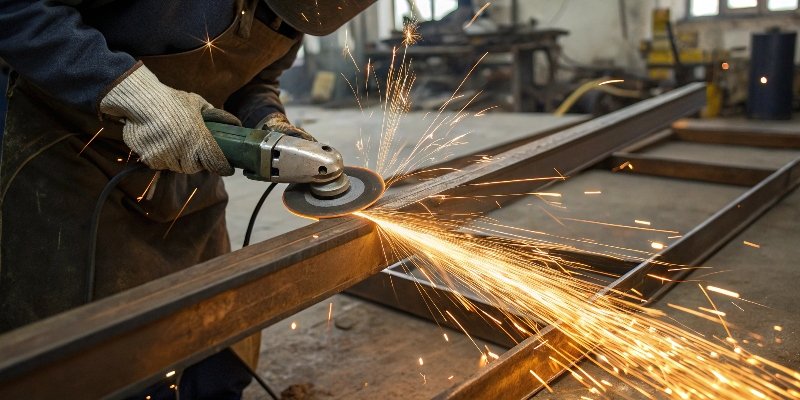
That’s the quick answer, but getting a perfect result involves more than just turning on the tool. The real skill is in the details, from the type of disc you choose to how you finish the job. Let’s break down the whole process so you can cut welds like a professional every time and avoid common, costly mistakes.
How to cut welds with a grinder?
You are ready to start cutting, but you know one wrong move could ruin the project. A bad cut means a jagged edge, gouges in the metal, or a dangerous kickback. Following a clear method is the only way to get a safe, professional finish.
To properly cut welds, first prepare your tool and workpiece. Then, use a steady cutting technique with the disc at a 90-degree angle. Always wear your safety gear. After cutting, clean and grind the area for a perfectly smooth surface.
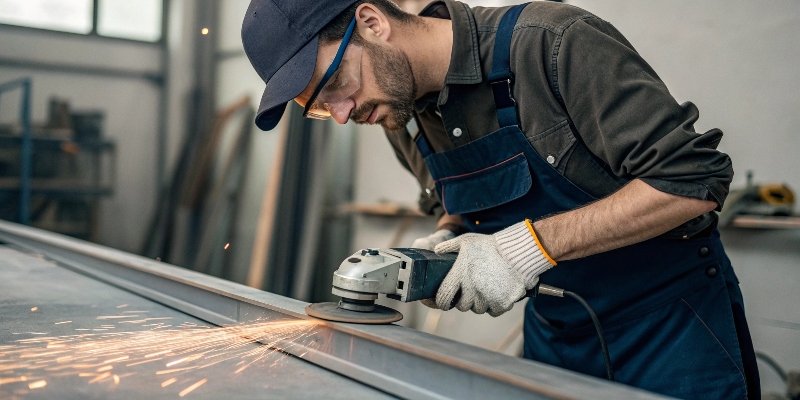
Let’s dive deeper into the exact steps for a flawless job. After almost three decades of manufacturing abrasives here in Henan, we’ve seen how important technique is. The best disc in the world can’t make up for poor procedure.
Step 1: Preparation is Key
Before the sparks fly, a little preparation goes a long way. First, choose the right cutting disc1. You need a thin abrasive disc2 made for metal, not a thick grinding wheel3. If you’re cutting stainless steel, use an "INOX" rated disc to prevent contamination. Check the disc for any cracks or damage. A damaged disc can shatter at high speed. Then, make sure your workpiece is completely secure. Use heavy-duty clamps4 to lock it onto your workbench. If the piece moves or vibrates while you’re cutting, the disc can bind up and kick back at you.
Step 2: The Right Cutting Technique
Your stance and grip are critical for control. Hold the angle grinder5 firmly with both hands. Keep the cutting disc perfectly perpendicular (at a 90-degree angle) to the weld seam. Don’t angle it. Angling the disc puts side pressure on it, which can cause it to break. Let the grinder’s speed do the work. Apply light, steady pressure and guide the tool along the weld line. Forcing it will only slow you down and create excess heat.
| Cutting Type | Technique |
|---|---|
| Straight Cuts | Move the grinder in a straight line along the weld. Use a slow, consistent speed for a clean separation. |
| Curve Cuts | Don’t try to make a sharp turn. Instead, make a series of small, straight relief cuts to create the curve. |
Always position yourself so the sparks fly away from your body.
What is the best tool for grinding welds?
You have a weld to finish, but so many different tools are on the market. Choosing the wrong one will waste your time and money, and it will definitely lead to a poor-quality job. An angle grinder with the right abrasive is the most versatile and effective tool.
The angle grinder is the best all-around tool for grinding welds. It is powerful and versatile. You can easily switch between cutting discs, grinding wheels, and flap discs to handle every step, from removing the weld bead to blending and finishing the surface smoothly.
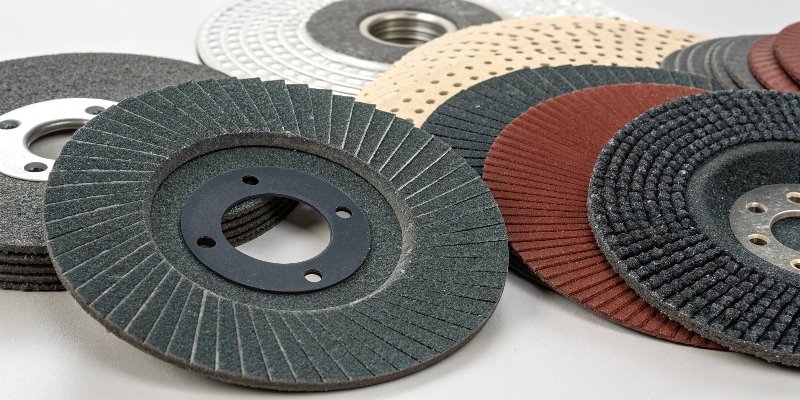
In our factory, we produce a huge range of abrasives, and we know that the angle grinder is the operator’s best friend. Its power and flexibility are unmatched for weld work. But the tool is only half the story. The abrasive you attach to it is what really does the work. You need to match the abrasive to the specific task you are doing. Using the wrong disc is like trying to drive a nail with a screwdriver. It just won’t work well.
Why the Angle Grinder Wins
The angle grinder delivers high RPMs (Revolutions Per Minute), which is exactly what you need for efficient cutting and grinding of metal. It’s portable, so you can take it to the job. And it’s incredibly versatile. This single tool can take a weld from a rough, raised bead to a completely invisible, smooth surface just by changing the disc.
Choosing Your Abrasive
Here is a simple guide to choosing the right attachment for each stage of the job. As manufacturers, we design specific products for each of these steps.
| Abrasive Type | Best Use Case | Why It Works |
|---|---|---|
| Thin Cutting Disc | Removing the weld bead | Fast, precise cuts with minimal material loss. It’s the best choice for separating welded parts cleanly. |
| Grinding Wheel | Heavy material removal | Aggressively grinds down the main body of the weld, making it level with the base metal quickly. |
| Flap Disc | Grinding and finishing | A great all-in-one option. It removes material and leaves a smoother finish than a grinding wheel, blending the weld area. |
| Wire Wheel | Cleaning and preparation | Removes slag, spatter, and rust without taking off base metal. It’s for cleaning, not grinding. |
Can you put a blade on a grinder?
You see all kinds of attachments for your grinder and start to wonder what is possible. But putting the wrong "blade" on an angle grinder, like a wood-cutting saw blade, is one of the most dangerous things you can do in a workshop. You must only use discs specifically designed for a grinder.
Yes, you can put a "blade" or disc on a grinder, but it must be an abrasive cutting or grinding disc. You should never use a toothed saw blade, like those for cutting wood. These can catch on the metal and cause a violent kickback, leading to severe injury.
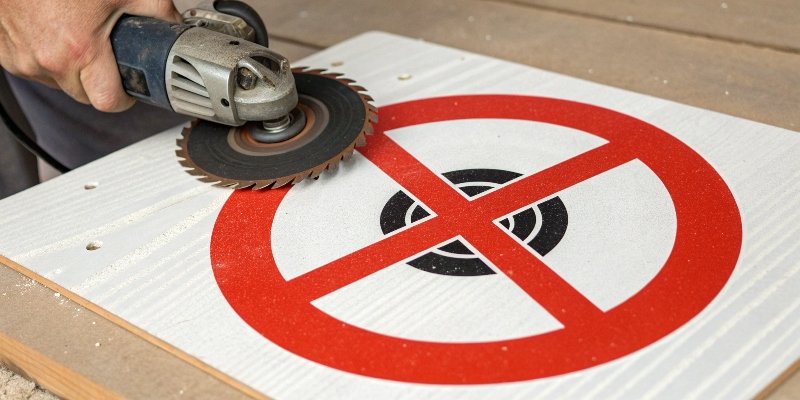
This is not a suggestion. It is a critical safety rule. I have heard too many horror stories that started with someone thinking they could save a few minutes by using the wrong blade. An angle grinder spins at over 10,000 RPM. It does not have the safety features of a circular saw, and it is not designed to handle the forces a toothed blade creates when it snags.
The Danger of the Wrong Blade
A toothed wood or metal saw blade is designed for a low-RPM saw. The teeth are made to dig in and tear out material. On a high-RPM angle grinder, that "digging in" action becomes a violent grab. The tool is ripped out of your hands instantly. This is what we call kickback6, and it’s how people get seriously hurt. Angle grinders do not have a riving knife or the heavy-duty guards that circular saws do to manage this risk. The tool is simply not built for it.
What "Blades" Are Safe?
The only things you should attach to your grinder spindle are discs made specifically for it. These include:
- Bonded Abrasive Discs: These are the standard cutting discs and grinding wheels. They are made from abrasive grains held together by a bonding agent.
- Diamond Blades: These have diamond segments on the edge and are used for cutting very hard materials like concrete, masonry, and sometimes specialized metals.
- Flap Discs: These are made from overlapping flaps of sandpaper.
- Wire Wheels and Cups: These are for cleaning and rust removal.
Always check the RPM rating7 printed on the disc. The disc’s RPM rating7 must be equal to or higher than the maximum RPM of your grinder. This information is a promise from the manufacturer, like our company RL, that the disc is safe to use at that speed.
Can a grinder be used as a cutter?
You own an angle grinder for smoothing things out, but now you need to make a cut. You might wonder if you have to go out and buy a whole separate tool for the job. Your angle grinder is an excellent cutter, as long as you use the right kind of disc.
Absolutely. An angle grinder becomes a powerful and precise cutting tool when you equip it with a thin abrasive cutting disc. It is perfect for cutting through all kinds of metal, including rebar, sheet metal, bolts, and, of course, welds. It is one of its main jobs.
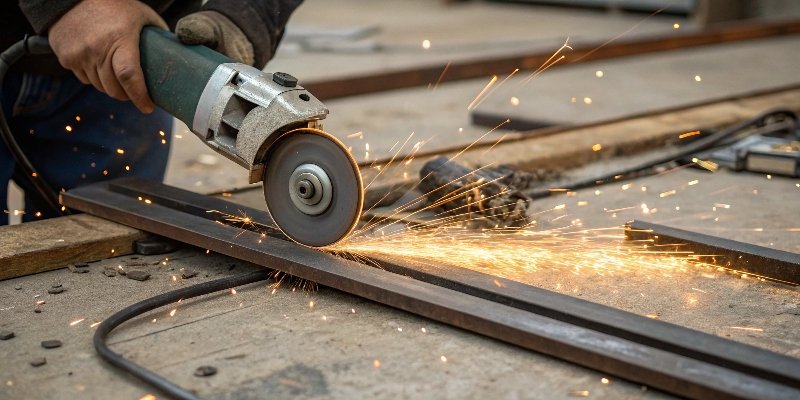
Many people new to the trade think of a grinder as just for grinding. But its name, "angle grinder," can be a little misleading. It is truly a multi-purpose tool. For our customers in high-precision machining, efficiency is everything. Having one tool that can both cut and grind saves time, money, and space in the workshop. It simplifies your workflow and makes you more productive.
From Grinder to Cutter: The Simple Switch
Changing your angle grinder from a grinding tool to a cutting tool is simple. You just switch the disc. You use the spanner wrench that came with your grinder to loosen the flange nut while holding down the spindle lock button. You take off the thick grinding wheel and put on a thin cutting disc. Then you tighten the flange nut back down. The whole process takes less than a minute. It’s this easy transition that makes the angle grinder so valuable on the factory floor and in the workshop.
What Can You Cut?
With the correct cutting disc, an angle grinder can cut through almost any metal. You can cut carbon steel, stainless steel, aluminum, and more. It is essential to match the disc to the material. For example, our INOX-rated discs are designed for cutting stainless steel. They are made without iron, sulfur, or chlorine, so they won’t contaminate the stainless steel and cause it to rust later. This is a detail that professionals care about. Beyond metal, you can also get specialized diamond blades8 to cut through tile, concrete, and stone. So, yes, your grinder is one of the best cutters you can have.
Conclusion
An angle grinder is a powerful tool for cutting welds. To get a professional finish, always use the correct abrasive disc, secure your work, and follow strict safety procedures.
-
Explore this link to find the best cutting discs that ensure clean and efficient cuts with your angle grinder. ↩
-
Find out about different abrasive discs and their specific uses to enhance your grinding and cutting tasks. ↩
-
Learn the differences between grinding wheels and cutting discs to choose the right tool for your project. ↩
-
Explore options for heavy-duty clamps that will keep your workpiece secure during cutting. ↩
-
Understand why the angle grinder is favored for cutting welds and how it can improve your workflow. ↩
-
Understand the causes of kickback to prevent accidents and ensure safe operation of your angle grinder. ↩
-
Understand the importance of RPM ratings to ensure safe and effective use of your angle grinder. ↩ ↩
-
Discover the applications of diamond blades and how they can enhance your cutting capabilities. ↩
Written by
leeon
You may also be interested in:
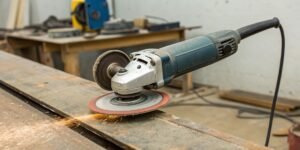
What is an angle grinder?
Are you confused by this powerful, versatile tool? You see it everywhere but are not sure what it does or if you need one. Getting
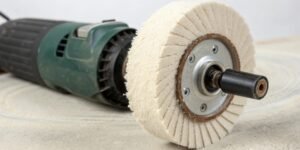
What is a buffing wheel used for?
Dull, scratched surfaces can ruin your products. This costs time and money. A buffing wheel is your tool to restore that perfect, professional finish everyone
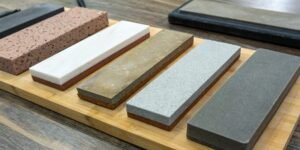
What is the best type of sharpening stone for kitchen knives?
Your kitchen knives are getting dull, making simple tasks like slicing a tomato a frustrating chore. A dull knife is a dangerous knife, but choosing
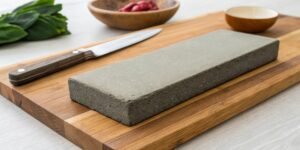
What is a good sharpening stone for my knives?
A dull knife is frustrating and can be unsafe. But with so many sharpening stones available, choosing the right one feels overwhelming. I will help
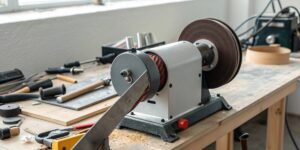
What belt grinder should a (beginner) knife maker own?
Starting knife making is exciting, but choosing the right grinder is overwhelming. The wrong one ruins projects and wastes money. This guide simplifies picking the
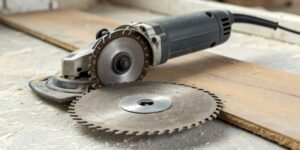
Can I put a circular saw blade on a grinder?
You need to make a quick cut, and your angle grinder is right there. It’s tempting to try and fit a saw blade on it.
